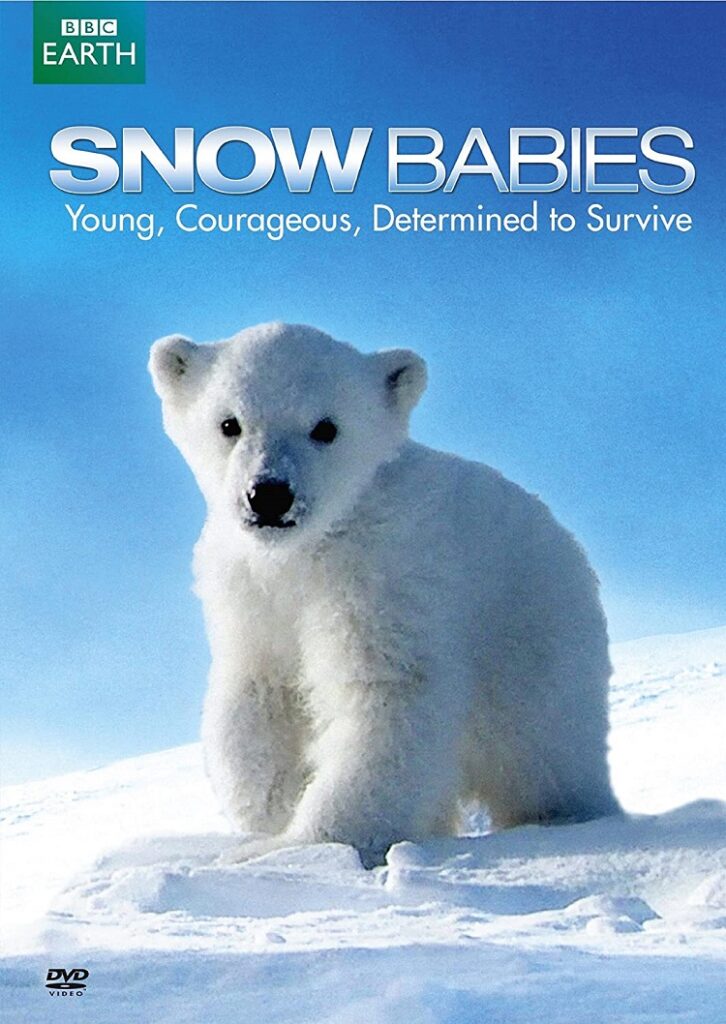
Life is often difficult for baby animals in the wild. For babies born into the harsh, winter conditions of the Arctic and Antarctic regions, among others, survival is not always a sure thing. Narrated by Caroline Quentin, BBC Earth’s Snow Babies takes an in-depth look at the first year of life for a number of animals, including polar bears, arctic wolves, snow monkeys, reindeer, and penguins.
The story begins in Antarctica, the coldest place on earth. Its winters are extreme, with little daylight and temperatures reaching as low as -112° F. Few would expect anything to live here, let alone thrive, yet this is where thousands of emperor penguins call home. Two months before their babies hatch, the mother penguins set off to find fish to eat while the fathers keep the eggs and, later, the penguin chicks warm. It’s a rough existence — the father can go over 100 days without eating while waiting for the mother to return — but a necessary one as two minutes on the ice alone could easily kill a penguin chick. The camera work here and throughout Snow Babies is fantastic, really showing the struggle these birds go trough for survival of their families.
The winters are no easier in the Arctic. Female polar bears may feed their cubs milk, but can often go eight months without a meal of their own. Meanwhile, reindeer calves work hard to keep up with the herd to avoid becoming easy prey for arctic wolves and white tail eagles. Life is a constant challenge for these animals, both in terms of finding food and avoiding becoming food and the documentary shines at showing scenes of this family life without being invasive to the animals themselves.
In the mountains of Japan, winters can be equally harsh, with food proving scarce. In groups of snow monkeys, the females rule the roost, as a queen figure, while the males fight for their pecking order. The monkeys are social creatures and it benefits them greatly to make friends with the other monkeys before winter sets in so they are not alone in the elements. They are resourceful, often out of necessity, and will eat berries, leaves, fruit, nuts, and insects to survive. It’s not all bad news for these snow monkeys; however, some manage to find warmth in waters heated by a volcano. Think of snow monkeys in a hot tub and that will give an idea of what this comical scene looks like.
Throughout Snow Babies, the theme is survival. The documentary does an excellent job of showing just how rough it is for these brave animals and is filmed in a way that takes the viewer right in the middle of these families. Though only 60 minutes in length, Snow Babies is loaded with information and facts about every animal and location discussed throughout. It is a testament to the filmmakers that they were able to pack so much into such a seemingly short amount of time.
In addition to the excellent Snow Babies, the DVD also includes Polar Bear — Spy On The Ice as a bonus feature. Shown as two 50-minute episodes, Polar Bear gets as close as possible to the world’s largest land predator. The filmmakers use cameras disguised as everyday objects, such as an “iceberg cam” or a “snowball cam” that look like their namesakes to get closer than anyone would otherwise be able to get to these bears. The polar bears are curious, investigating the cameras, with some seemingly positioning them for better shots. For the most part though, they leave them alone, so non-threatened are they by their presence, which results in some remarkable footage.
For wildlife lovers, these DVDs are an excellent opportunity to peek into a world seldom seen from the inside. The narration is informative, serving as an enhancement to the video footage. The spy camera nature of the footage allows for a view that would be unobtainable with a film crew in the middle of the herd and makes Snow Babies an excellent viewing experience.